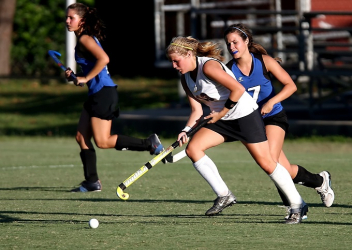Research In Action
Research In Action
Breadcrumb

During my years of general pediatrics residency training, I became acutely aware of the epidemic of violence impacting American children. After connecting with the Center for Injury Research and Prevention (CIRP), Center for Violence Prevention (CVP), and Minds Matter Concussion Program at CHOP, it became evident that one way I could help the community as a Child Neurology trainee was to investigate concussions in children who were victims of violence. Even though nearly 30% of pediatric concussion occurs from mechanisms other than sports, most pediatric concussion research focuses on sports and recreation-related concussion with less attention given to other mechanisms of injury. With this research gap in mind, I joined my clinical and research colleagues from CVP and the Minds Matter program to investigate concussion from assault in a recently published study in the journal Pediatric Emergency Care.
How Assault-Related Concussions Differ From Sports-Related Concussions
We hypothesized that children with assault-related concussions may be unique based on the factors that bring them to care, the setting of clinical care, and associated emotional and psychological factors that may influence physical recovery. In our study, we performed a retrospective cohort study of 62 children with sports-and-recreation-related concussion (SRC) and 62 children with assault-related concussion (ARC) who presented for care within the CHOP Care Network. We assessed and compared demographic variables, medical care received, and health outcomes of these two groups and found important differences between them:
- Children with ARC were more likely to be Black, publicly insured, and present to the emergency department (ED) compared to children with SRC. These results are consistent with a previous study which found that underrepresented minorities were less likely to receive a concussion diagnosis when presenting to the ED with head trauma and more likely to sustain concussion from non-sports related mechanisms.
- Children with ARC were 2.8 times less likely to receive concussion-specific diagnostic testing in the form of visio-vestibular testing during their initial evaluation.
- More than twice as many children with ARC reported a decline in grades compared to children with SRC.
- Children with ARC had a more extended recovery trajectory than their peers who sustained sports-related injuries.
The results of our study, the first to explore differences between children with SRC and ARC, suggest that children with ARC are a unique population. A greater proportion of children with ARC were from underrepresented minority groups and were publicly insured. Moreover, they were less likely to receive visio-vestibular testing at the time of diagnosis, a key tool that predicts prognosis and treatment by identifying balance, vestibular, and oculomotor deficits associated with morbidity and longer recovery times. Finally, children with ARC reported a significant impact on school performance, which is likely multifactorial and warrants further investigation into contributing factors and possible interventions.
What Providers Can Do Now
While more research into the factors contributing to the differences in children with ARC is needed, providers can take some initial steps:
- During an initial assessment, consider using standardized measures of concussion (such as visio-vestibular testing) in any child with head trauma, regardless of injury mechanism.
- Consider early referral to concussion specialists in children with ARC due to their higher risk for a prolonged recovery.
- Children with concussion from assault may struggle more in school, so providers should specifically inquire about school performance and partner with parents to increase school-based academic supports.
For more information, visit CHOP’s Minds Matter Concussion Program website.




